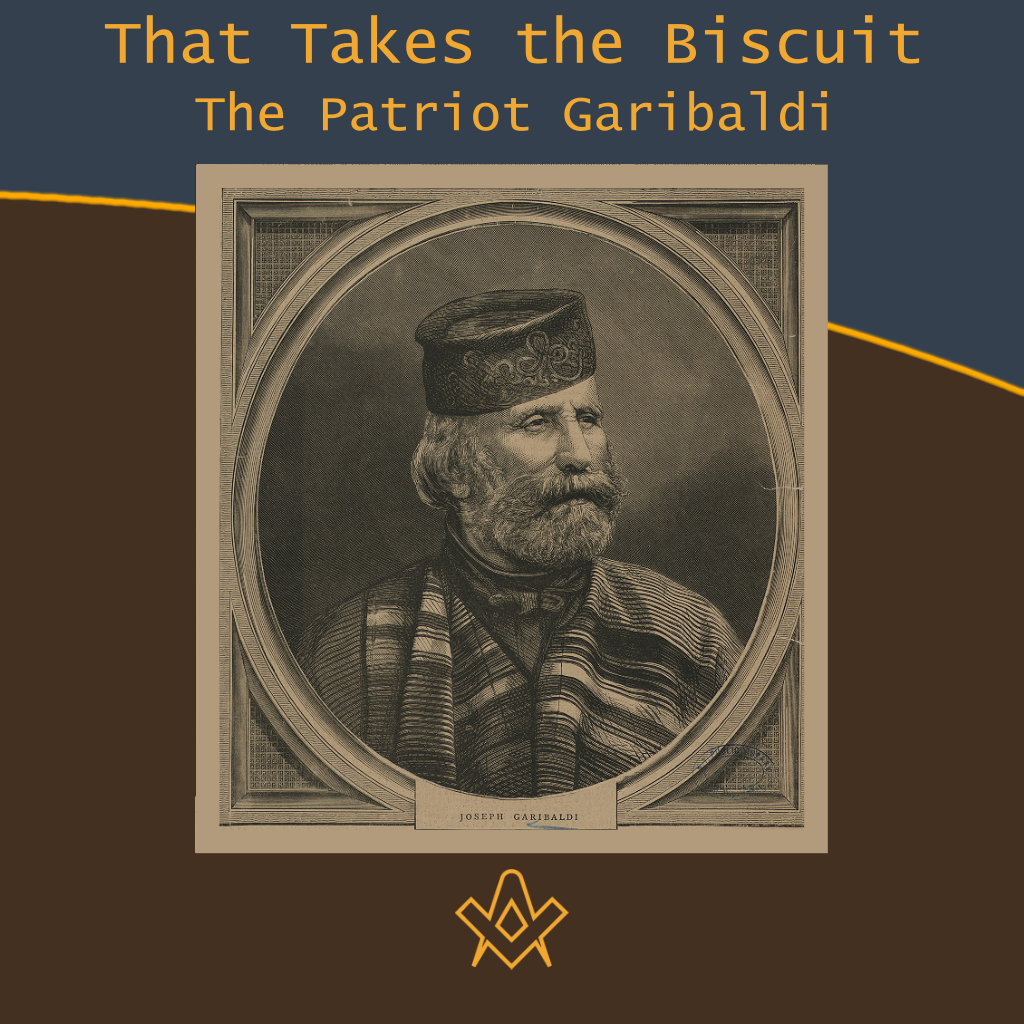In April 1864, Garibaldi, the Italian Patriot visited Britain and was ‘Royally’ greeted by the Prince of Wales and members of parliament.
He also had meetings with exiled revolutionaries based in London and with ordinary working men.
He planted trees, signed visitors books, received gifts and was awarded honorary memberships. He also visited Bedford’s Iron Works, no doubt to secure supplies for his cause (the signed visitors’ book being in the ‘Higgins’ museum).
His ‘celebrity’ was marked with memorabilia and later, the famous ‘Garibaldi’ biscuit.
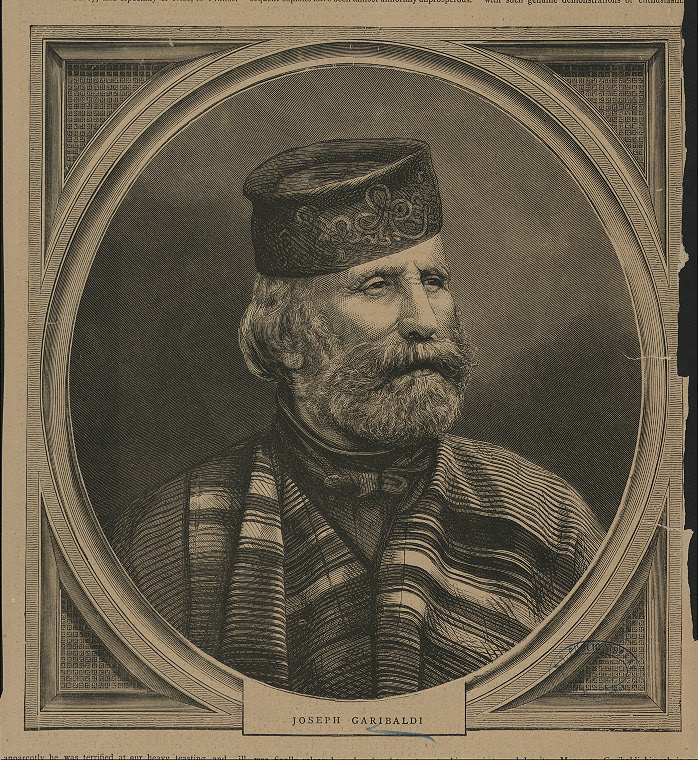
Guisseppe (Joseph) Garibaldi
Image Credit: NYPL Digital Collections
Giuseppe Garibaldi (July 4, 1807–June 2, 1882) was an Italian general and politician who played a large role in the history of Italy and the world.
A central figure in the Italian Risorgimento, since he personally commanded and fought in many military campaigns that led eventually to the formation of a unified Italy.
He has been called the “Hero of Two Worlds” because of his military enterprises in Brazil, Uruguay and Europe.
These earned him a considerable reputation in Italy and abroad, aided by exceptional international media coverage at the time.
Many of the greatest intellectuals of his time, such as Victor Hugo, Alexandre Dumas, and George Sand showered him with admiration.
The United Kingdom and the United States helped him a great deal, offering him financial and military support in difficult circumstances.
In the popular telling of his story, he is associated with the red shirts worn by his volunteers in lieu of a uniform.

Redshirt volunteers from Brescia during the Expedition of the Thousand (1860) – By Nino Bixio(Life time: 1821-1873) – Original publication: PostcardImmediate source: I Mille, Public Domain
IMAGE LINKED: wikimedia Attribution 4.0 International (CC BY 4.0)
Garibaldi returned to Italy during the revolutions of 1848, and offered his services to Charles Albert of Sardinia.
The monarch displayed some liberal inclinations, but treated Garibaldi with coolness and distrust.
Rebuffed by the Piedmontese, he and his followers crossed into Lombardy where they offered assistance to the provisional government of Milan, which had rebelled against the Austrian occupation.
In the course of the following unsuccessful First Italian War of Independence, he led his legion to two minor victories at Luino and Morazzone.
After the crushing Piedmontese defeat at Novara (23 March 1849), Garibaldi moved to Rome to support the Republic recently proclaimed in the Papal States, but a French force sent by Louis Napoleon (the future Napoleon III) threatened to topple it.
At Mazzini’s urging, Garibaldi took command of the defence of Rome.
In fighting near Velletri, Achille Cantoni saved his life. After Cantoni’s death, during the Battle of Mentana, Garibaldi wrote the novel Cantoni il volontario.
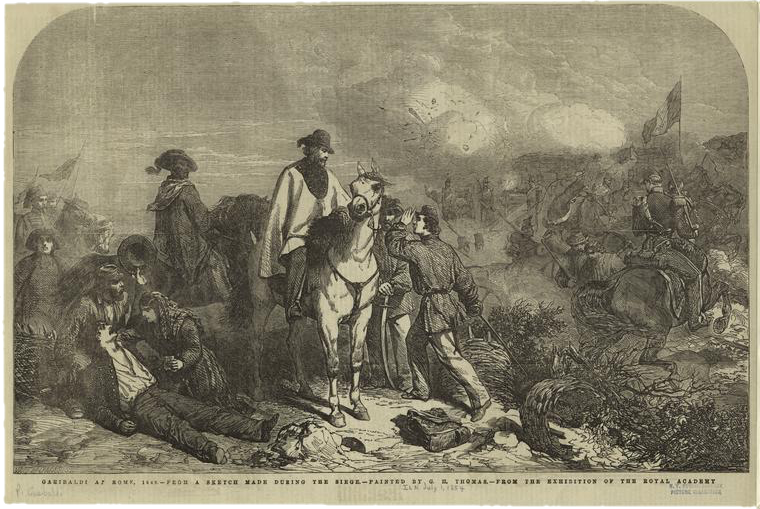
Garibaldi At Rome, 1849, From A Sketch Made During The Siege.
IMAGE LINKED: NYPL Digital Collections Attribution 4.0 International (CC BY 4.0)
On 30 April 1849 the Republican army, under Garibaldi’s command, defeated a numerically far superior French army.
Subsequently, French reinforcements arrived, and the siege of Rome began on 1 June. Despite the resistance of the Republican army, the French prevailed on 29 June.
On 30 June the Roman Assembly met and debated three options: surrender, continue fighting in the streets, or retreat from Rome to continue resistance from the Apennine mountains.
Garibaldi made a speech favouring the third option and then said: Dovunque saremo, colà sarà Roma (Wherever we may be, there will be Rome).
A truce was negotiated on 1 July, and on 2 July Garibaldi withdrew from Rome with 4,000 troops. The French Army entered Rome on 3 July and re-established the Holy See‘s temporal power.
Garibaldi and his forces, hunted by Austrian, French, Spanish, and Neapolitan troops, fled to the north with the intention to reach Venice, where the Venetians were still resisting the Austrian siege.
After an epic march, Garibaldi took momentary refuge in San Marino, with only 250 men still following him.
Anita, who was carrying their fifth child, died near Comacchio during the retreat.
As with many events in the 1800s, such popular interest was depicted on Staffordshire Prattware pot lids, the pots containing popular relishes, salves, and creams.

Staffordshire Prattware pot lids depicting Patriot Garibaldi & Meeting Victor Emmanuel
IMAGE LINKED: wikimedia Attribution 4.0 International (CC BY 4.0)
Garibaldi’s visit was also celebrated by the creation of…a biscuit. Manufactured by the now defunct Peek, Frean & Co. Ltd, the popular sweet treat consisted of currants squashed and baked between two thin oblongs of biscuit dough.

The famous ‘Garibaldi’ biscuit – By James F. Carter – Own work, CC BY-SA 2.5
IMAGE LINKED: wikimedia Attribution 4.0 International (CC BY 4.0)
Garibaldi joined Freemasonry during his exile, taking advantage of the asylum the lodges offered to political refugees from European countries governed by despotic regimes.
At the age of thirty-seven, during 1844, Garibaldi was initiated in the L’Asil de la Vertud Lodge of Montevideo.
This was an irregular lodge under a Brazilian Freemasonry not recognized by the main international masonic obedience’s, such as the United Grand Lodge of England or the Grand Orient de France.
While Garibaldi had little use for Masonic rituals, he was an active Freemason and regarded Freemasonry as a network that united progressive men as brothers both within nations and as a global community.
Garibaldi was eventually elected as the Grand Master of the Grand Orient of Italy. Garibaldi later regularized his position in 1844, joining the lodge Les Amis de la Patrie of Montevideo under the Grand Orient of France.
Garibaldi’s Masonic connections were explored in an exhibition at Freemasons’ Hall in London between May and August 2014, to mark the 150th anniversary of his visit to London. Lodge Italia No 2687 of London proudly boast his sword.
There is a proposal for a new lodge in the Province of Bedfordshire to bear his name. Bedford always welcomed the Italian diaspora, the people finding work in the brickfields, the health service, and contributing to the community. Worthy recognition of a Mason and Patriot.
Text source: Wikipedia via Creative Commons Attribution-ShareAlike License
Article by: Paul Gardner

Paul was Initiated into the Vale of Beck Lodge No 6283 (UGLE) in the Province of West Kent, England serving virtually continuously in Office and occupying the WM Chair on three occasions.
Paul joined Stability Lodge No 217 in 1997 (UGLE) and now resides with Kent Lodge No 15, (UGLE) the oldest Atholl Lodge with continuous working since 1752, where he was Secretary and now Assistant Secretary and archivist, having been WM in 2002.
In Holy Royal Arch he is active in No 15 Chapter and Treasurer of No 1601, which was the first UGLE Universities Scheme Chapter in 2015.
He was Secretary of the Association of Atholl Lodges which maintains the heritage of the remaining 124 lodges holding ‘Antients’ Warrants and has written a book on Laurence Dermott. - https://antients.org
Recent Articles: by Paul Gardner
 Exchanged the Sceptre for the Trowel Explore the intriguing history of Royals and Freemasonry following the new Monarch's Coronation. From Prince Albert's initiation to the influence of George II and beyond, discover why royalty has long exchanged the sceptre for the trowel, shaping society and maintaining power through this ancient craft. |
 Unearth the mystic origins of Freemasonry in 'That He May Be Crafted.' Paul Gardner explores the symbolic use of working tools from the earliest days of this secret society, revealing a time when only two degrees existed. Delve into this fascinating study of historical rituals and their modern relevance. |
 Paul Gardner looks to a time when politics and Masonry were not precluded, but shush! This was London Masons and the Spitalfields Act of 1773-1865. |
 That rank is but the guinea’s stamp, the man himself’s the gold. But what does this mean, even given the lyric and tone of Burns’ time? It is oft times used in a derogatory sense, (somewhat in good humour) between Masons (or not) on the achieving of honours. But its antecedents are much more complex than that. |
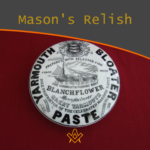 John and Timothy Coleman Blanchflower were initiated in Walpole Lodge, No. 1500, Norwich England on 2 December 1875; noted as a purveyor of ‘sauce’ to masons! |
 Jacob’s Ladder occupies a conspicuous place among the symbols of Freemasonry being on the First Degree Tracing Board, the most conspicuous and first seen by the candidate on his initiation – a vision of beauty and intrigue for the newly admitted. |
 During a detective hunt for the owner of a Masonic jewel, Paul Gardner discovered the extraordinary life of a true eccentric: Dr William Price, a Son of Wales, and a pioneer of cremation in Great Britain. Article by Paul Gardner |
 Paul Gardner tells the story of his transition from one rule book to another – from the Book of Constitutions to the Rule Book for Snooker! |
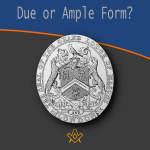 Due or Ample Form? What is ‘Ample’ form, when in lodges the term ‘Due’ form is used? |
 The Butcher, the Baker, the Candlestick Maker Paul Gardner explores the Masonic link between provincial towns’ craftsmen, shop keepers and traders in times past. Many remain in the modern era and are still to be found on the high street. |
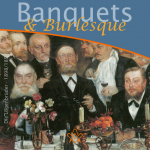 Masonic dining and banquets, at least for the annual Investitures, were lavish, and Kent Lodge No. 15, the oldest Atholl lodge with continuous working from 1752, was no exception. |
 The ‘cable-tow’ or ‘noose’ is used in Craft Masonry as part of the ritual, as are ropes and ties in other degrees - but what does it symbolise? |
 Paul Gardner reflects on those days of yore and the “gentleman footballer” in Masonry |
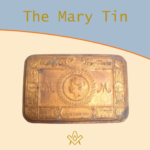 What is the Masonic connection with the 1914 Christmas Mary Tin |
 That Takes the Biscuit - The Patriot Garibaldi Giuseppe Garibaldi Italian general and politician Freemason and the Grand Master of the Grand Orient of Italy. |
 W.Bro. Paul Gardner looks at a mid 19th century artefact and ponders ‘Chairing’ |
masonic knowledge
to be a better citizen of the world
share the square with two brothers

click image to open email app on mobile device


